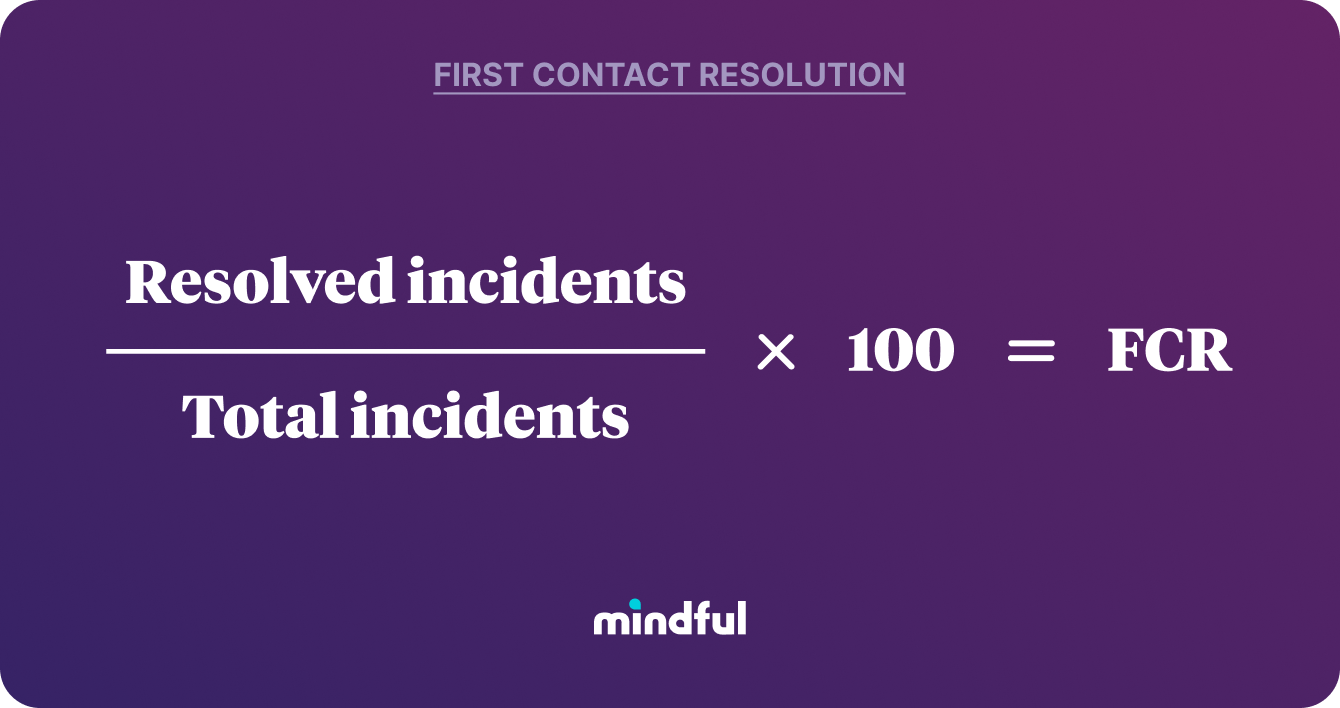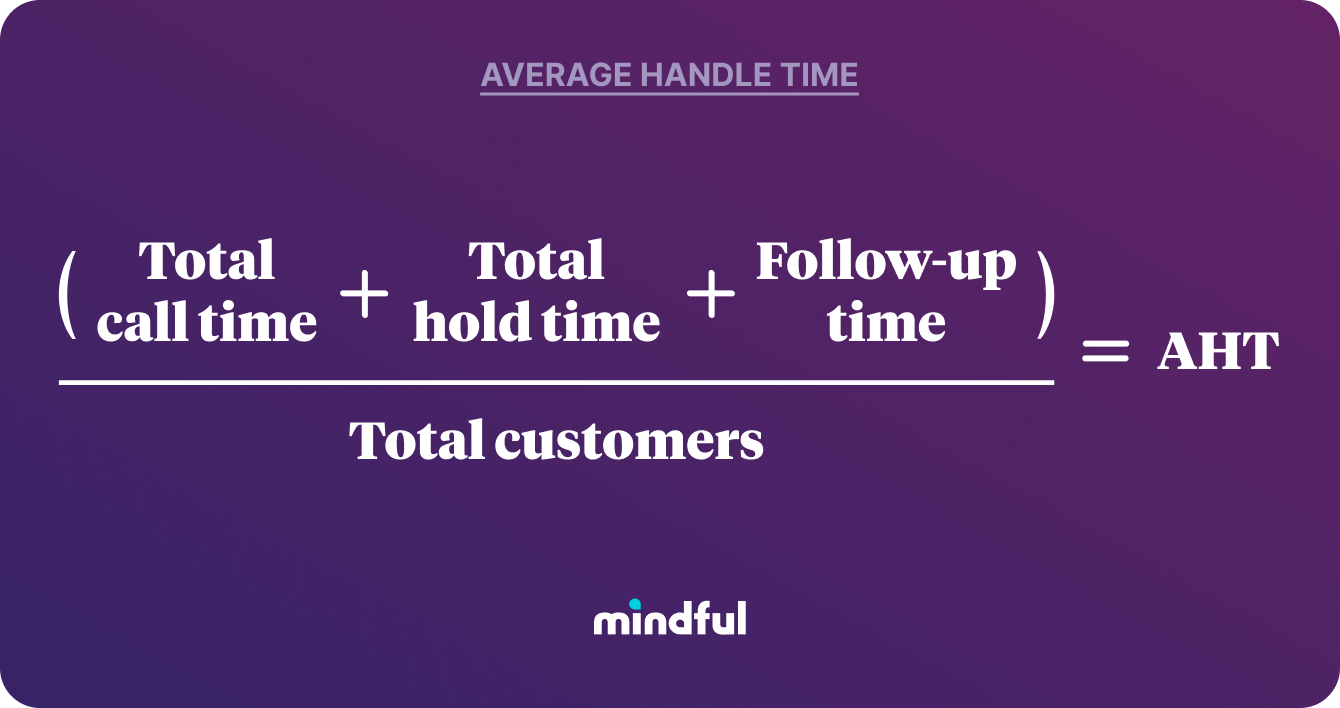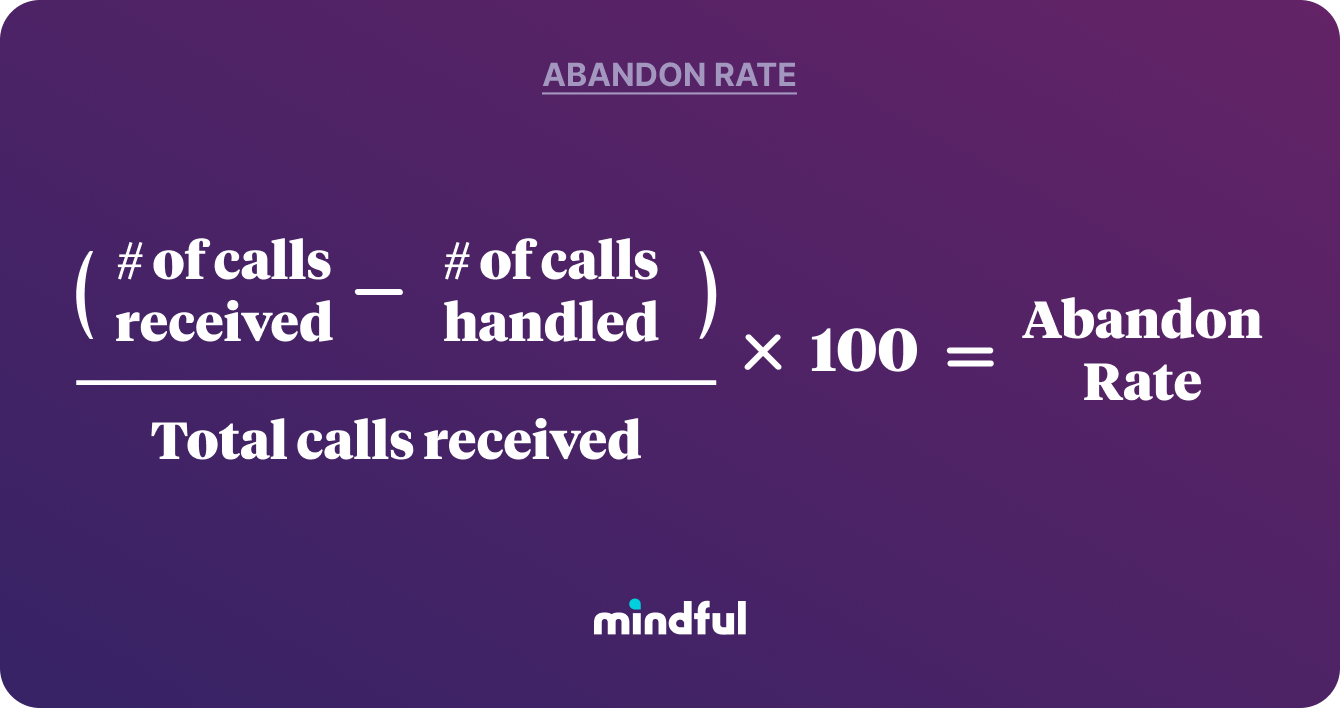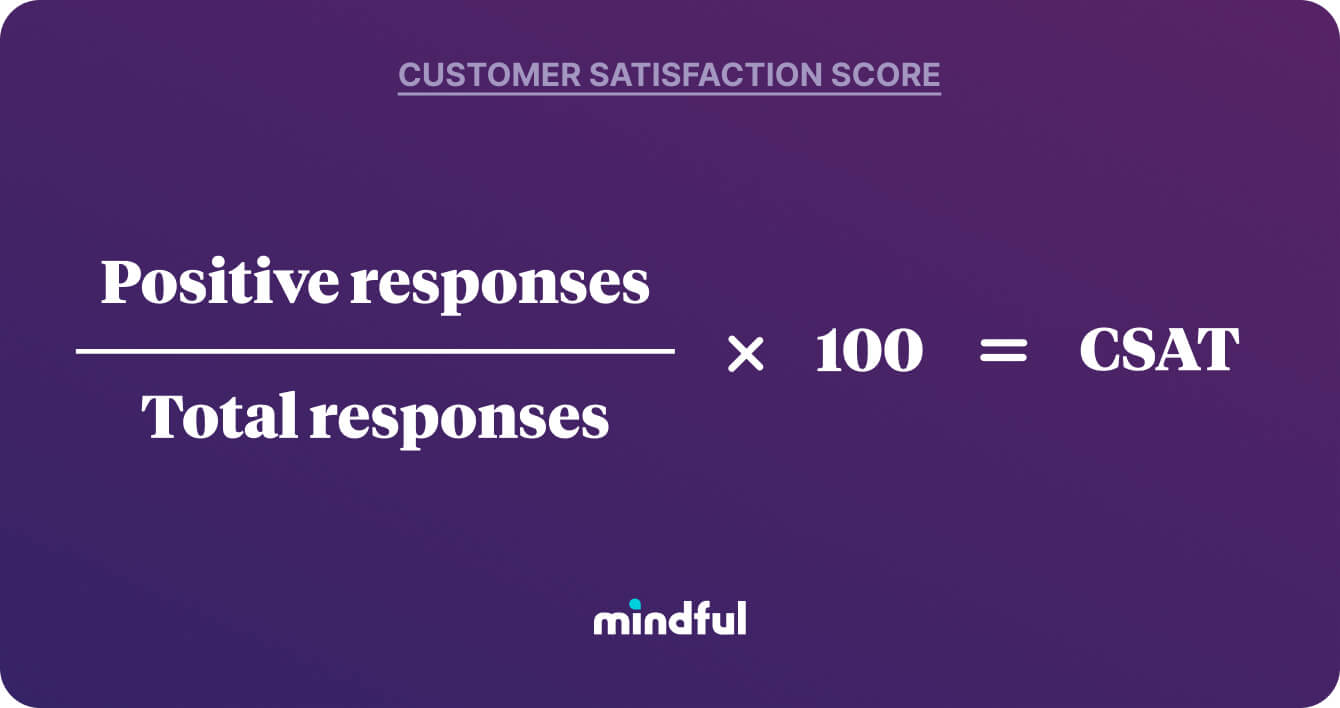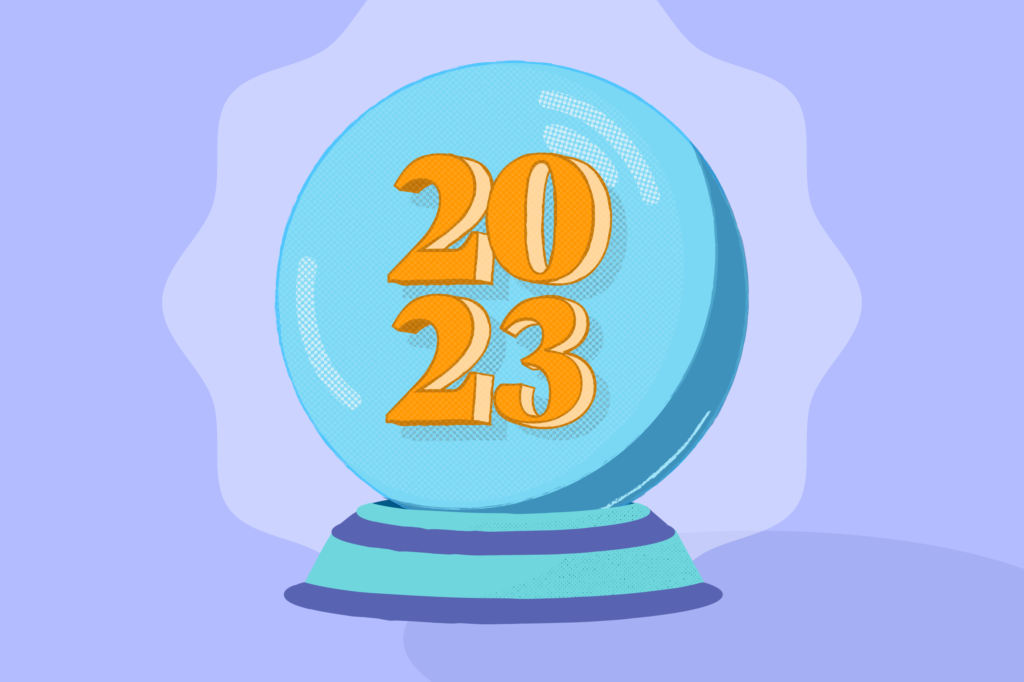You’ve likely invested a great deal of time and money in your call center. But how can you tell if it’s working at peak efficiency and providing callers with a great customer experience?
You measure relevant call center metrics and key performance indicators (KPIs).
Yet, with so many call center KPIs out there, it can be hard to identify the ones that will truly make or break your investment. We’ve done the work for you and picked the top four metrics you should measure to evaluate call center performance.
- First contact resolution (FCR)
- Average handle time (AHT)
- Abandon rate
- Customer satisfaction score (CSAT)
Improving these four call center metrics will fast-track your call center to perform at peak efficiency and effectiveness. They’ll give you insight into crucial aspects of your contact center’s performance so you can know how to improve and offer the best customer and agent experience possible.
First contact resolution
First contact resolution (FCR) measures how often your customers have their questions or issues resolved in a single interaction with your business—whether through email, chatbot, text message, or phone call.
Why should FCR be one of the first metrics you measure in your contact center? Because higher FCR rates are usually accompanied by:
- Reduced operating costs. Repeat callers drain your contact center’s time, resources, and budget. When you give callers the answer they need on their first try, you can reduce repeat callers—freeing up your customer service agents to handle the next caller.
- Higher employee satisfaction. We’ve yet to meet someone who enjoys having to call customer service twice for help. Chances are your agents haven’t either. Repeat callers are frustrated callers, and they’ll typically take that frustration out on your service reps—leading to longer phone calls and more burnt-out agents.
- Increased customer satisfaction. It goes without saying: callers who get what they need the first time they contact you are generally happier and have a more positive perception of your business. In fact, one study shows that a 1% improvement in FCR leads to a 1% increase in their CSAT scores.
How to measure FCR
To measure your FCR rate, take your number of issues resolved on first contact, divided by the total number of tickets, then multiply by 100.
For example, if your call center takes 2,500 calls a day and resolves 2,000 calls, your FCR rate would be 80%. According to industry benchmarks, a reasonable FCR rate for a medium-sized call center is 70–75%, and 28% of companies believe FCR is a primary indicator of their call center’s performance.
How to improve call center FCR
There is no one-and-done solution to improving FCR, and the best results usually require a top-down approach to be genuinely sustainable. Some steps you can take to improve your FCR include:
- Create an internal knowledge database. When agents need to find an answer or solution for a customer on the fly, having an internal knowledge database they can quickly refer to helps prevent unnecessary call transfers and escalations.
- Remove agent roadblocks. Agents should be empowered to handle inquiries and simple tasks (like billing or changing contact info) on their own—reserving escalation calls for only those instances that require extra attention from a manager.
- Provide training and mentorship. Data shows that agent training directly correlates to higher FCR rates. Create training and mentorship programs for new agents to learn best practices and insider knowledge on solving customer inquiries.
- Deploy a virtual queue and callback solution. We’ve discovered that customers who forego waiting on hold for a callback option tend to have quicker conversations with higher FCR rates.
Average handle time
Your call center’s average handle time (AHT) is how much time an agent spends on the entire interaction—from greeting the caller to taking notes and inputting CRM data post-call.
A lower AHT means your agents can handle more calls in a specific time period. But while the idea of decreasing AHT sounds tempting for call center workforce managers, the goal is to find the balance between the lowest handle time per call while still providing quality customer service and a high FCR. On the one hand, contact centers risk frustrated, repeat callers if they focus too much on reducing AHT; On the other hand, having too high of an AHT means the call center is inefficient.
Another benefit of measuring AHT is that it can help reveal customer pain points and agent roadblocks. For instance, you may notice that lengthy calls center around a specific group of customer needs or questions. Or you may discover you need to eliminate or rethink specific agent processes that contribute to extended handle times.
How to measure AHT
To calculate your call center’s average handle time, add the total call time, the total hold time, and then the follow-up time, and divide that by the total number of calls.
So, if in the span of a day, your contact center agents spend 6,500 minutes talking with 1,500 customers, 700 minutes transferring calls, and 4,000 minutes taking notes post-call, your daily AHT would be 7.46 minutes per customer.
How to reduce AHT
Again, pushing your agents to have the lowest AHT possible could significantly decrease satisfaction with your customer service team. Instead, a comprehensive approach could include:
- Agent training. Inexperienced agents are responsible for long calls. Have them shadow more experienced agents to see how quick resolutions are applied.
- Analyzing call recordings. “This call may be recorded”—and there’s a good reason it should be. You can go through recordings to see where gaps, lack of agent knowledge, or excessive pauses can help you to improve the average speed of answers.
- Automation. If a customer is calling you about operating hours, does it need a live agent to handle that call? It does not. Ensure your IVR has easily accessible answers to common questions that won’t waste an agent’s time.
- Self-service options. You can reduce the average handle time by redirecting the customer to a top-notch self-service option that can answer their questions quickly, like an optimized FAQ or tutorials page. According to CEB data, 81% of customers would rather have self-service options than speak to a live agent.
Abandon rate
Your abandonment rates show how often customers leave a call while waiting for help.
A high abandonment rate means customers are not connecting with agents and will likely call you again—angrier and ready to vent. That will lead to lengthier phone calls, lower satisfaction scores, and customer churn.
How to measure abandonment rate
To calculate your abandonment rate, you take the number of calls received, subtract the number of calls handled, divide that number by the number of calls received, and multiply by 100. The number left is your call abandonment rate percentage.
Say your contact center received 1,500 calls and handled 1,275 of them. In this instance, your abandon rate would be 15%.
How to reduce abandon rate
An abandoned call is potentially lost business revenue. While answering every call that comes into your contact center is unrealistic, here are some ways you can work to reduce your abandonment rate:
- Improve your call center hold times. Roughly 60% of callers will hang up the phone after waiting on hold for five minutes. But when you offer a callback, you can cut hold times altogether and improve FCR, AHT, Abandonment, and CSAT in one go.
- Simplify your IVR. Disorganized, lengthy IVRs are frustrating to callers. Evaluate how current callers interact with your IVR, then reorganize it to put the most common options at the front.
CSAT scores
Your CSAT scores tell you how satisfied or happy the customer is with your business, and high customer satisfaction is your call center’s ultimate goal.
Suppose your CSAT scores for your call center are low. In that case, your customers are unsatisfied—and with 96% of consumers stating customer service as their most significant factor in deciding when to do business with a company, you need a solid fundamental measurement of what your customers think of you.
How to measure CSAT
You calculate CSAT by taking the number of positive scores from your two highest ratings—e.g., 4 and 5 on a five-point scale. You then divide that by the number of respondents and multiply by 100.
So, if you had 10,000 customers respond, and 6,500 were positive responses (either a 4 or 5 rating on the satisfaction scale), your CSAT score would be 65%.
How to improve call center CSAT
Using your CSAT scores is a solid start when starting your call center performance evaluation. Regardless of how well trained your agents are or how efficiently and quickly they handle calls, performance won’t matter much if your call center does not improve CSAT to its highest potential. To enhance your CSAT scores, take these steps:
- Take an omnichannel approach. Meet your customers in the support channel of their choice—text, web, chatbot, app, or phone call. Then, ensure each experience is cohesive and customer data flows between each one so they can seamlessly transition between them when seeking help from your agents.
- Improve your FCR. Like we said above, giving customers the solution they need the first time around is the basis of an excellent customer experience.
- Collect and monitor CSAT data. Regularly reviewing CSAT data will show you what’s working and what’s not so you can keep your customers happy and address any glaring issues in your product, service, or customer service department. Tools like Mindful Feedback can provide valuable Voice of the Customer (VoC) data in near real-time so you can see exactly how your customers feel about your brand.
Next steps: Keep tabs on your critical contact center KPIs.
Metrics as an evaluation tool should not be a one-stop solution. You should also look at employee satisfaction, technology innovations that can help improve your customer’s experience, and examples of customer service from industry leaders.
Mindful can help by providing assistance in critical areas and taking some of the burdens from traditional call centers by automating processes, routing callers to the right support options, and giving customers the option to choose their channel and time of support.
This way, your call center can operate at peak efficiency and effectiveness while providing each caller with an excellent customer experience.
Interested in learning more about Mindful? Get a demo today.
Note: This post was originally published in March 2015, and has since been updated.



